Abstract
Airway obstruction is an important factor predisposing to the development of apnoea in preterm infants. An ultrafine fibreoptic scope was used to examine the upper airway of 12 preterm infants with recurrent problematical apnoea. Continuous visualisation of the airway was possible and recorded on to videotape together with simultaneous cardiorespiratory monitoring to detect apnoeic episodes in 12 infants studied. In seven infants obstruction was observed at laryngeal level with the arytenoid masses and aryepiglottic folds closing across the vocal cords. This was not only observed in obstructive apnoea but also during mixed apnoea in periods where no respiratory effort was detectable and again in apparently pure central apnoea. The findings confirm the larynx as an anatomical site of upper airway obstruction. They agree with other indirect methods of assessing airway patency that obstruction has an important role in the pathophysiology of apnoea of prematurity.
Full text
PDF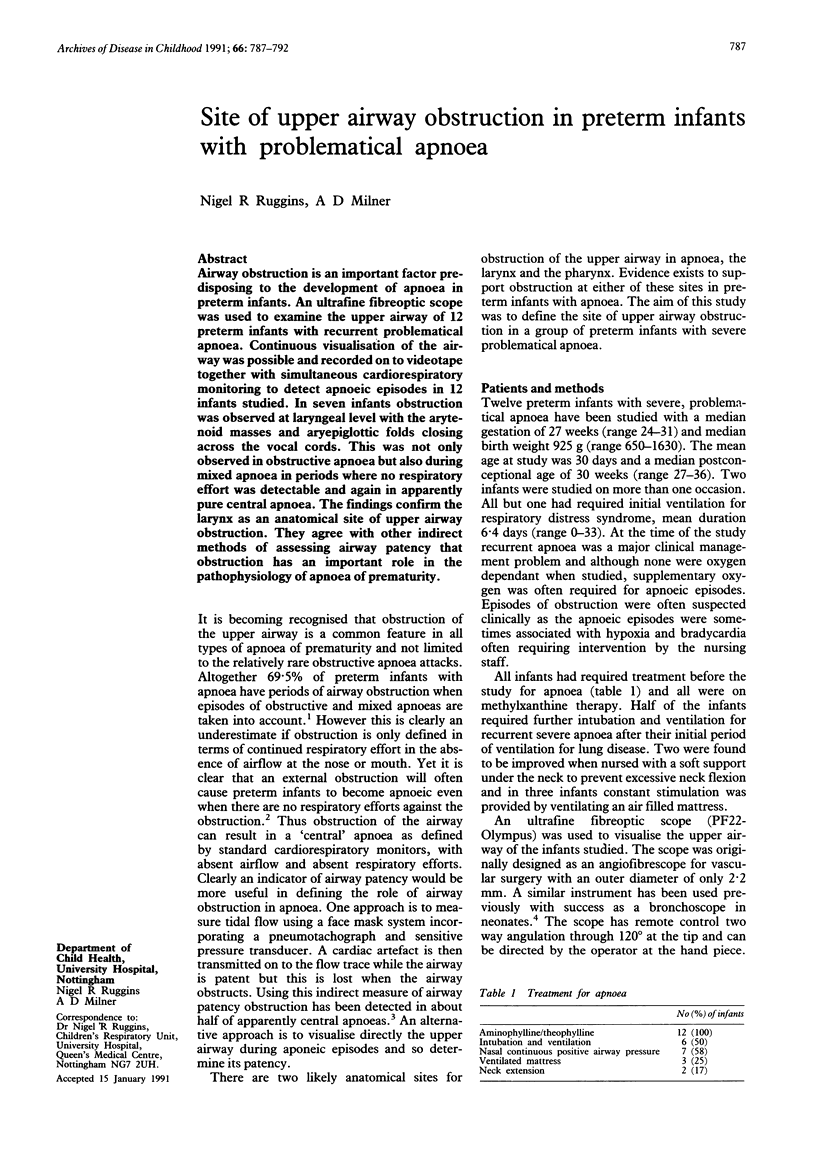
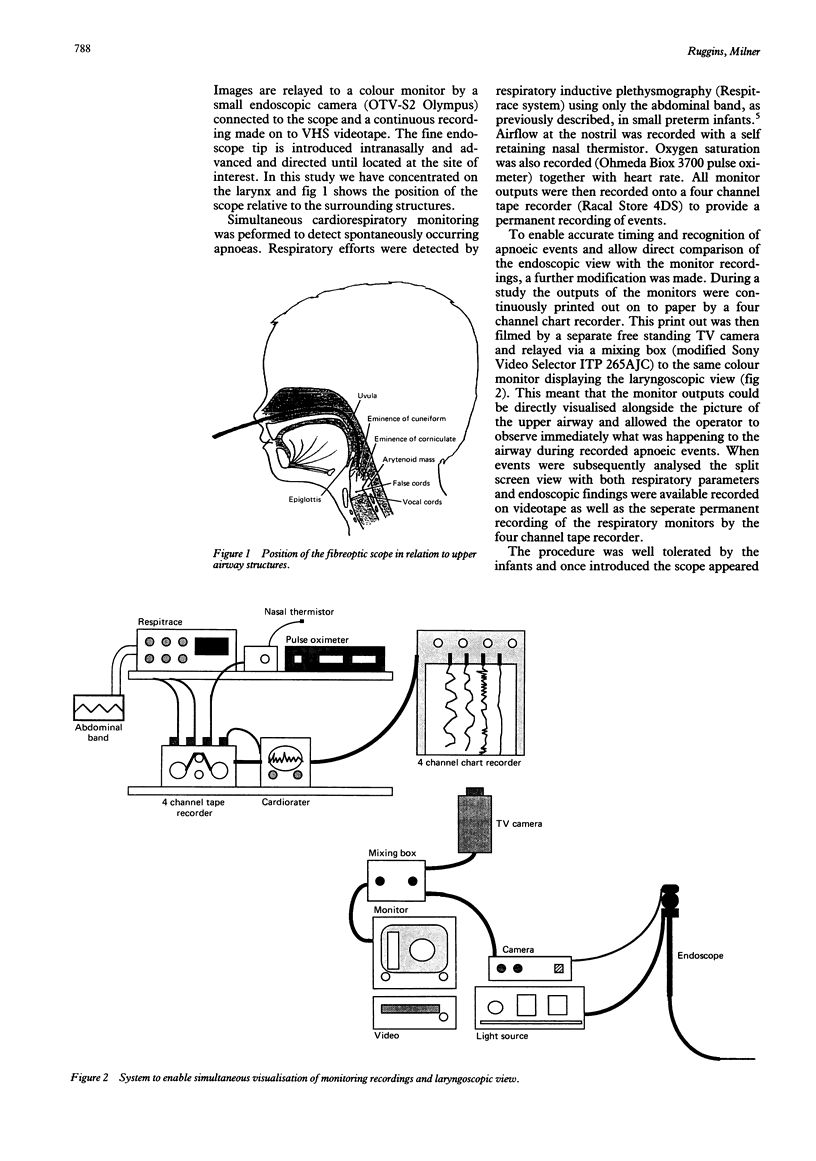
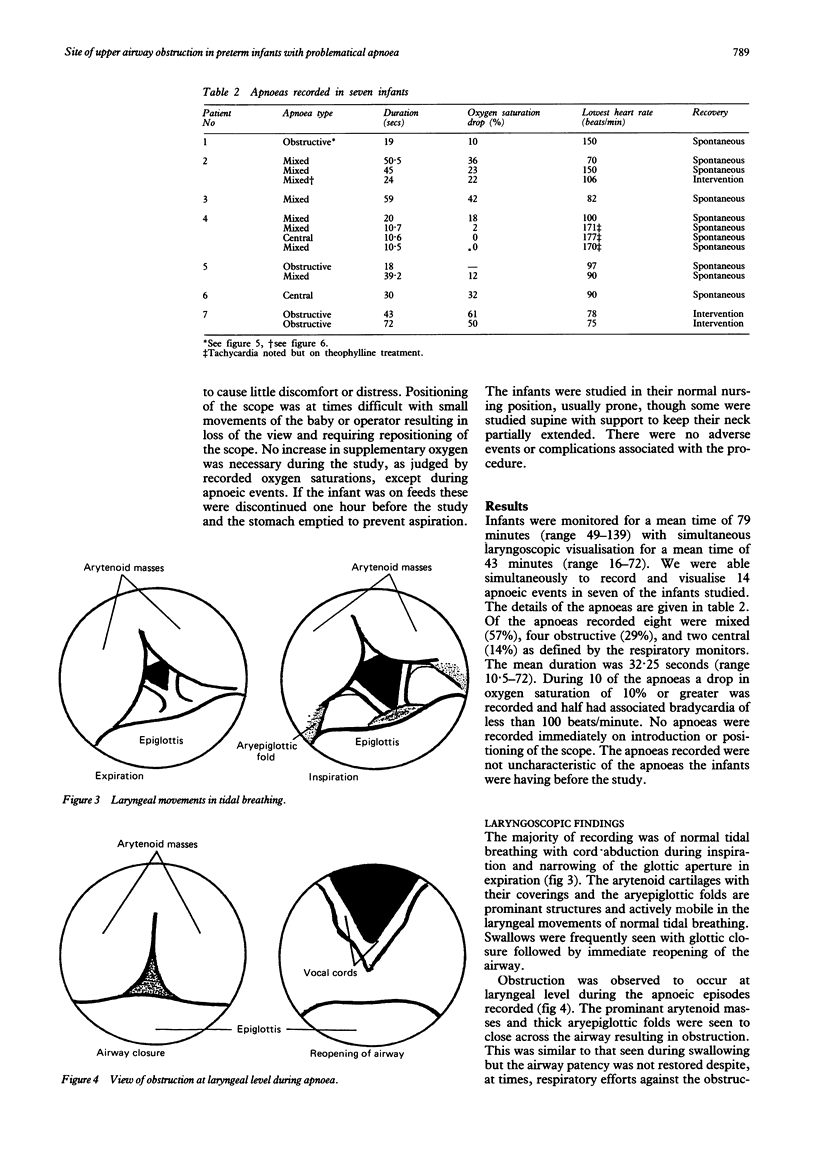
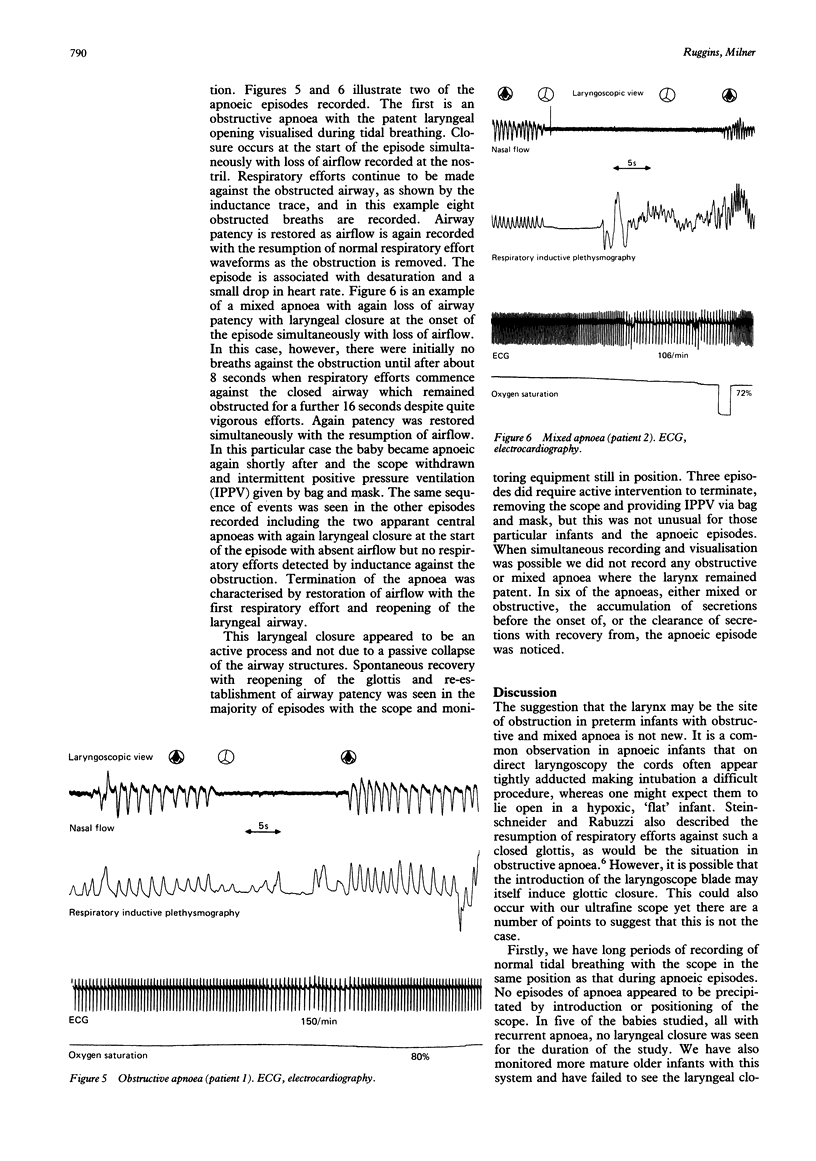
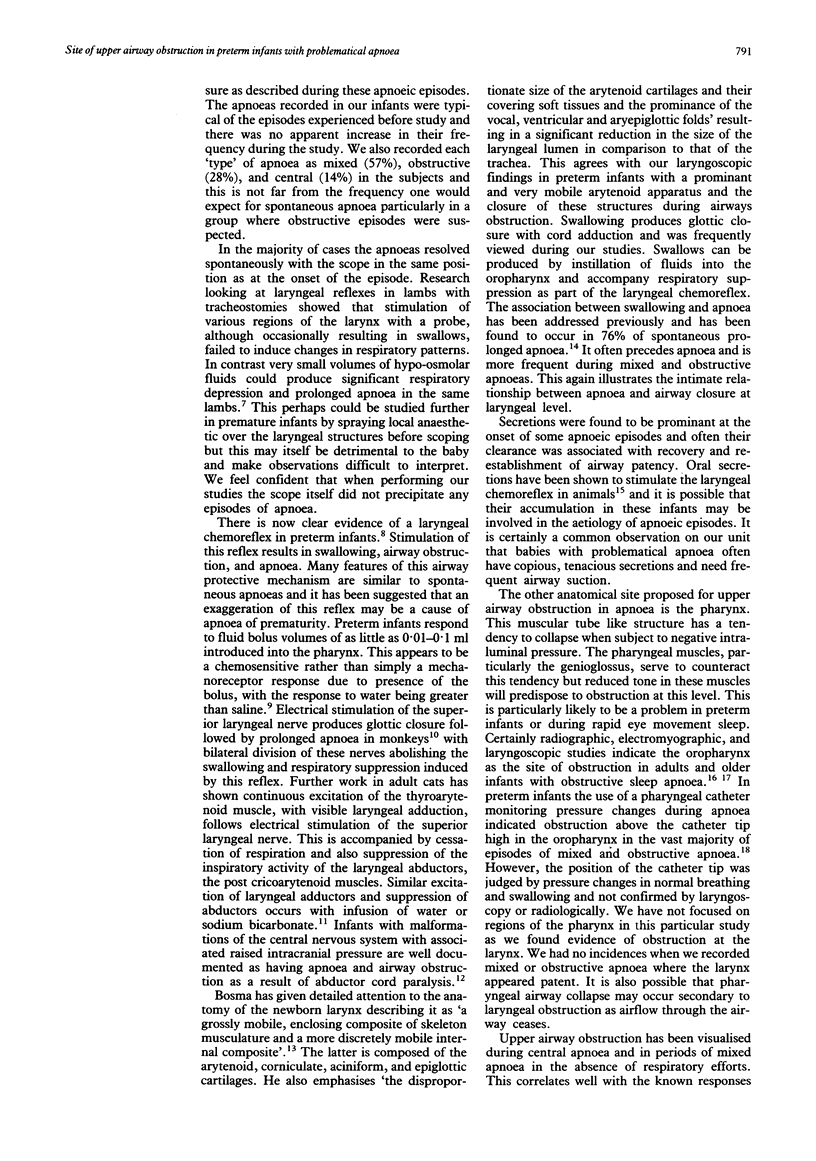
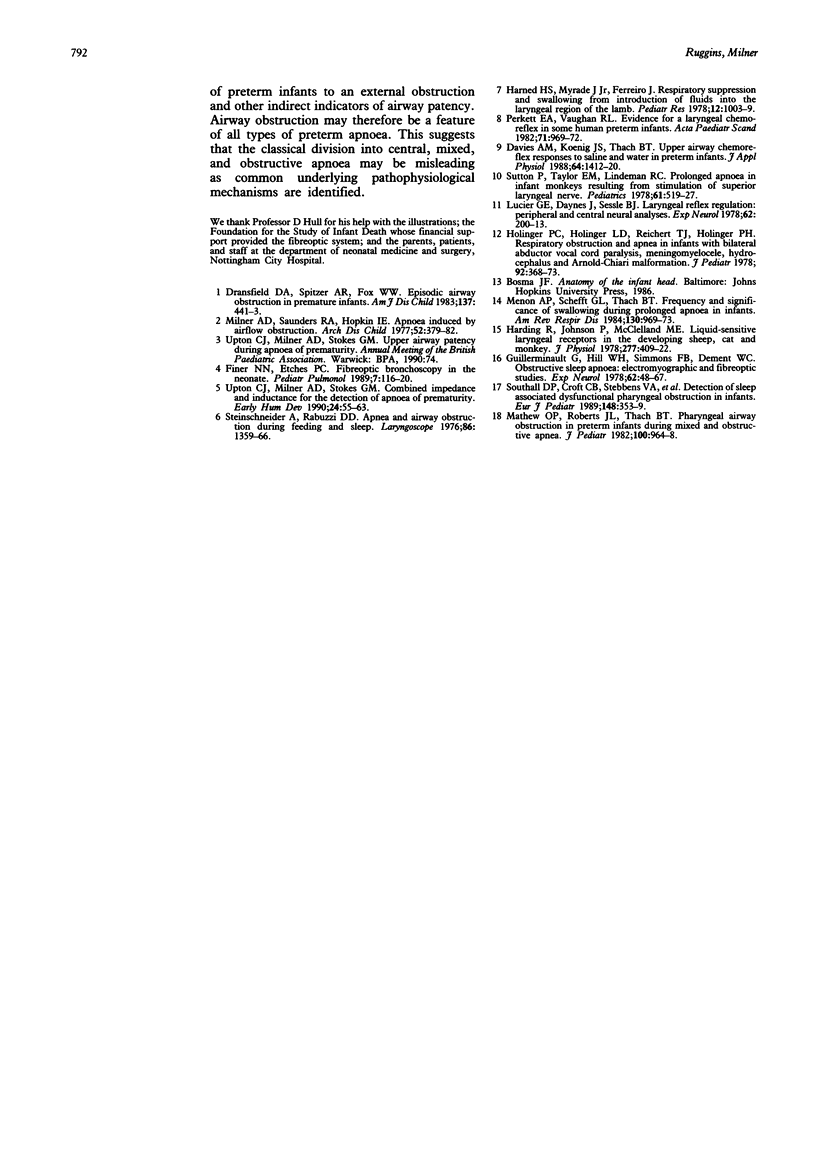
Selected References
These references are in PubMed. This may not be the complete list of references from this article.
- Davies A. M., Koenig J. S., Thach B. T. Upper airway chemoreflex responses to saline and water in preterm infants. J Appl Physiol (1985) 1988 Apr;64(4):1412–1420. doi: 10.1152/jappl.1988.64.4.1412. [DOI] [PubMed] [Google Scholar]
- Dransfield D. A., Spitzer A. R., Fox W. W. Episodic airway obstruction in premature infants. Am J Dis Child. 1983 May;137(5):441–443. doi: 10.1001/archpedi.1983.02140310023005. [DOI] [PubMed] [Google Scholar]
- Finer N. N., Etches P. C. Fiberoptic bronchoscopy in the neonate. Pediatr Pulmonol. 1989;7(2):116–120. doi: 10.1002/ppul.1950070212. [DOI] [PubMed] [Google Scholar]
- Guilleminault C., Hill M. W., Simmons F. B., Dement W. C. Obstructive sleep apnea: electromyographic and fiberoptic studies. Exp Neurol. 1978 Oct;62(1):48–67. doi: 10.1016/0014-4886(78)90040-7. [DOI] [PubMed] [Google Scholar]
- Harding R., Johnson P., McClelland M. E. Liquid-sensitive laryngeal receptors in the developing sheep, cat and monkey. J Physiol. 1978 Apr;277:409–422. doi: 10.1113/jphysiol.1978.sp012281. [DOI] [PMC free article] [PubMed] [Google Scholar]
- Harned H. S., Myracle J., Jr, Ferreiro J. Respiratory suppression and swallowing from introduction of fluids into the laryngeal region of the lamb. Pediatr Res. 1978 Oct;12(10):1003–1009. doi: 10.1203/00006450-197810000-00011. [DOI] [PubMed] [Google Scholar]
- Holinger P. C., Holinger L. D., Reichert T. J., Holinger P. H. Respiratory obstruction and apnea in infants with bilateral abductor vocal cord paralysis, meningomyelocele, hydrocephalus, and Arnold-Chiari malformation. J Pediatr. 1978 Mar;92(3):368–373. doi: 10.1016/s0022-3476(78)80421-1. [DOI] [PubMed] [Google Scholar]
- Lucier G. E., Daynes J., Sessle B. J. Laryngeal reflex regulation: peripheral and central neural analyses. Exp Neurol. 1978 Oct;62(1):200–213. doi: 10.1016/0014-4886(78)90051-1. [DOI] [PubMed] [Google Scholar]
- Mathew O. P., Roberts J. L., Thach B. T. Pharyngeal airway obstruction in preterm infants during mixed and obstructive apnea. J Pediatr. 1982 Jun;100(6):964–968. doi: 10.1016/s0022-3476(82)80529-5. [DOI] [PubMed] [Google Scholar]
- Menon A. P., Schefft G. L., Thach B. T. Frequency and significance of swallowing during prolonged apnea in infants. Am Rev Respir Dis. 1984 Dec;130(6):969–973. doi: 10.1164/arrd.1984.130.6.969. [DOI] [PubMed] [Google Scholar]
- Milner A. D., Saunders R. A., Hopkin I. E. Apnoea induced by airflow obstruction. Arch Dis Child. 1977 May;52(5):379–382. doi: 10.1136/adc.52.5.379. [DOI] [PMC free article] [PubMed] [Google Scholar]
- Perkett E. A., Vaughan R. L. Evidence for a laryngeal chemoreflex in some human preterm infants. Acta Paediatr Scand. 1982 Nov;71(6):969–972. doi: 10.1111/j.1651-2227.1982.tb09558.x. [DOI] [PubMed] [Google Scholar]
- Southall D. P., Croft C. B., Stebbens V. A., Ibrahim H., Gurney A., Buchdahl R., Warner J. O. Detection of sleep associated dysfunctional pharyngeal obstruction in infants. Eur J Pediatr. 1989 Jan;148(4):353–359. doi: 10.1007/BF00444133. [DOI] [PubMed] [Google Scholar]
- Steinschneider A., Rabuzzi D. D. Apnea and airway obstruction during feeding and sleep. Laryngoscope. 1976 Sep;86(9):1359–1366. doi: 10.1288/00005537-197609000-00008. [DOI] [PubMed] [Google Scholar]
- Sutton D., Taylor E. M., Lindeman R. C. Prolonged apnea in infant monkeys resulting from stimulation of superior laryngeal nerve. Pediatrics. 1978 Apr;61(4):519–527. [PubMed] [Google Scholar]
- Upton C. J., Milner A. D., Stokes G. M. Combined impedance and inductance for the detection of apnoea of prematurity. Early Hum Dev. 1990 Oct;24(1):55–63. doi: 10.1016/0378-3782(90)90006-5. [DOI] [PubMed] [Google Scholar]


